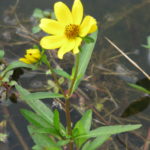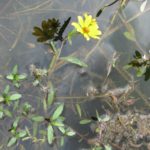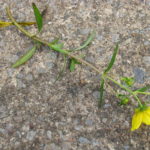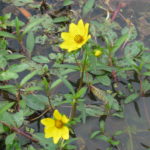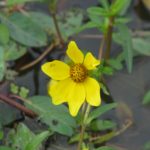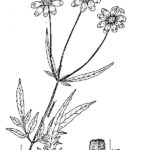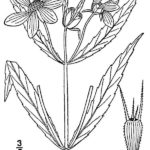Bidens spp.
Illustrations: USDA-NRCS PLANTS Database / USDA NRCS. Wetland flora: Field office illustrated guide to plant species. USDA Natural Resources Conservation Service. USDA-NRCS PLANTS Database / Britton, N.L., and A. Brown. 1913. An illustrated flora of the northern United States, Canada and the British Possessions. 3 vols. Charles Scribner’s Sons, New York. Vol. 3: 495.
What is Bur Marigold?
Physical Characteristics
Leaves:
Flowers:
- Surrounded by whorl of bracts
- Receptacle flat or slightly bulging out
- Yellow in color
- Usually 5-toothed
Fruit:
- One seeded
- Does not open to release seed when ripe
- Triangular
Roots:
- Long, thick root
- Fibrous
Where Does it Grow?
USDA, NRCS. 2018. The PLANTS Database (http://plants.usda.gov). National Plant Data Team, Greensboro, NC 27401-4901 USA.
Bur Marigold can be found in lakes, streams, marshes, and irrigation ditches.
Pros and Cons of Bur Marigold
Submerged portions of all aquatic plants provide habitats for many micro and macro invertebrates. These invertebrates in turn are used as food by fish and other wildlife species (e.g. amphibians, reptiles, ducks, etc.). After aquatic plants die, their decomposition by bacteria and fungi provides food (called “detritus”) for many aquatic invertebrates.
What Type of Bur Marigold Do I Have?
There are two common types of bur marigold in Texas. Click on the buttons to learn more about each specific species.
